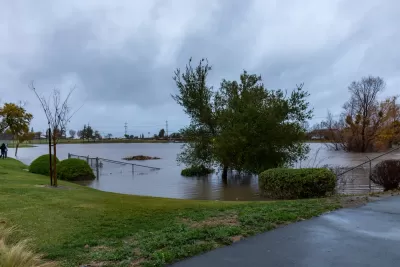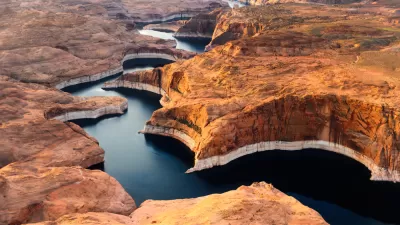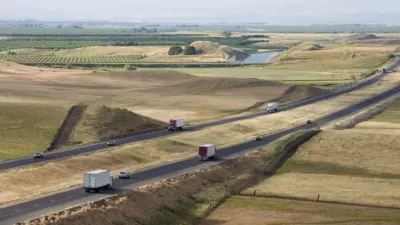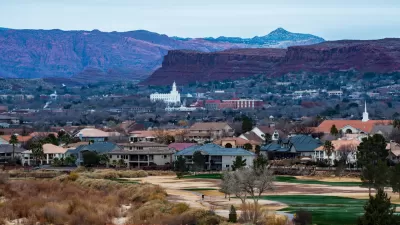Recent storms are bringing plenty of water to parched parts of California, but scientists warn the relief won’t be a long-term solution to longer, drier periods.

Could the massive storms drenching the West Coast this month bring relief to California after three years of drought? “If California’s recent climate history is a guide, not for long,” writes Henry Fountain in the New York Times. While the recent downpours may fill (and in some cases overfill) the state’s reservoirs, the better question, Fountain points out, is how future droughts will play out.
Fountain explains the history of California’s recent drought periods, which have been punctuated by brief periods of extreme rainfall. However, “Drought has returned relatively quickly each time in part because of natural climate variability. Dry years have always happened and will continue to happen.”
Meanwhile, climate change is making longer droughts more likely. “A 2015 study, for example, found that the odds of the state suffering an extreme drought like the one that began in 2012 had doubled as the world warmed over the prior century.” Scientists warn that “the high variability of precipitation in California reduces the likelihood of many consecutive, extremely wet years that could fully break a drought.”
Like much of the Southwest, California has been facing severe challenges to its water supplies as the region’s population grows and water sources like the Colorado River and Mono Lake, where conservationists are lobbying the state to reduce water exports to Los Angeles, dry up.
FULL STORY: Will Storms End California’s Drought? That May Be the Wrong Question

Study: Maui’s Plan to Convert Vacation Rentals to Long-Term Housing Could Cause Nearly $1 Billion Economic Loss
The plan would reduce visitor accommodation by 25,% resulting in 1,900 jobs lost.

North Texas Transit Leaders Tout Benefits of TOD for Growing Region
At a summit focused on transit-oriented development, policymakers discussed how North Texas’ expanded light rail system can serve as a tool for economic growth.

Why Should We Subsidize Public Transportation?
Many public transit agencies face financial stress due to rising costs, declining fare revenue, and declining subsidies. Transit advocates must provide a strong business case for increasing public transit funding.

A Visual Celebration of Manhattan’s Chinatown Elder Community, Through Food
Lanterns, cafeteria trays, and community connection take center stage in this stunning photo essay.

How to Make US Trains Faster
Changes to boarding platforms and a switch to electric trains could improve U.S. passenger rail service without the added cost of high-speed rail.

Columbia’s Revitalized ‘Loop’ Is a Hub for Local Entrepreneurs
A focus on small businesses is helping a commercial corridor in Columbia, Missouri thrive.
Urban Design for Planners 1: Software Tools
This six-course series explores essential urban design concepts using open source software and equips planners with the tools they need to participate fully in the urban design process.
Planning for Universal Design
Learn the tools for implementing Universal Design in planning regulations.
City of Santa Clarita
Ascent Environmental
Institute for Housing and Urban Development Studies (IHS)
City of Grandview
Harvard GSD Executive Education
Toledo-Lucas County Plan Commissions
Salt Lake City
NYU Wagner Graduate School of Public Service





























